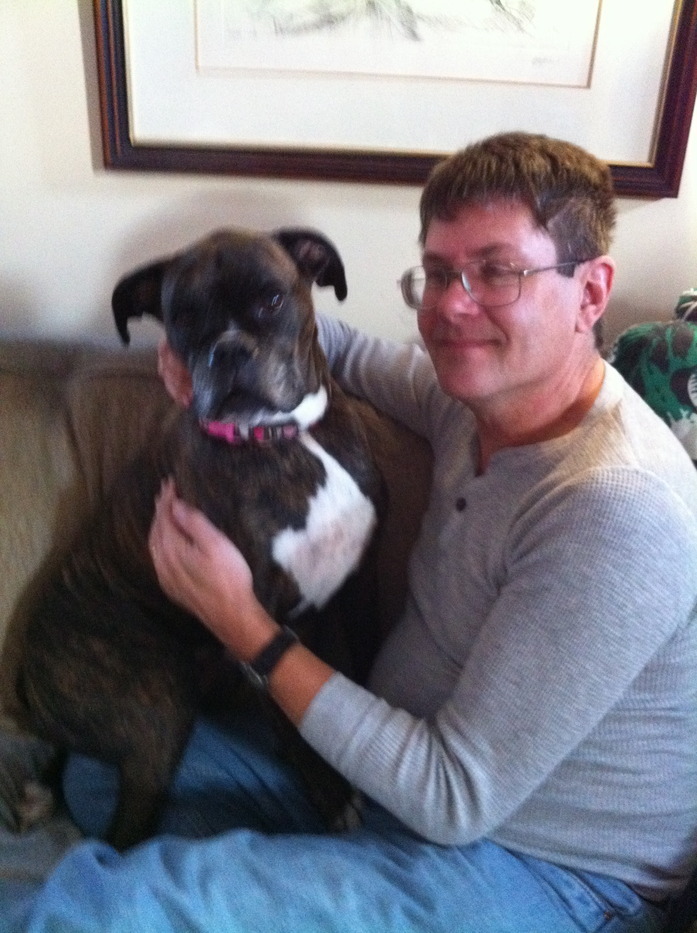


Books in series

Conjurors
1999

Batman
Gotham by Gaslight
1989

JSA
The Liberty Files
2000

Elseworld's Finest
Supergirl & Batgirl
1998
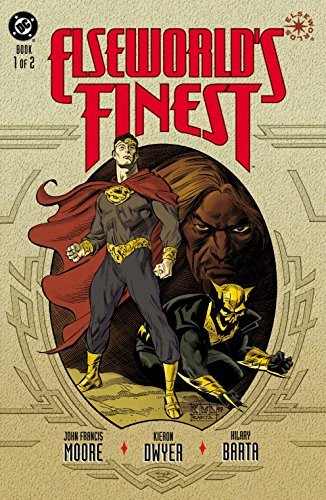
Elseworld's Finest (1997) #1
1997

Elseworlds 100-Page Spectacular
2011

Superman
Kal
1995

Superman & Batman
Generations, An Imaginary Tale
1999

JSA
The Golden Age
1994

Superman
Speeding Bullets (1993) #1
1993

Batman
Gotham by Gaslight
1989

Superman
A Nation Divided
1998

Batman
I, Joker
1998

The Green Lantern
Evil's Might
2002

Batman
The Golden Streets of Gotham
2003

Batman
Masque
1997
Flash
Flashpoint
2000

Batman
Dark Knight Dynasty
1998

Superman and Batman
World's Funnest #1
2000

Superman
War of the Worlds
1998

Green Lantern
1001 Emerald Nights
2001

Superman
Last Son of Earth
2000

Batman
Master of the Future
1991

Superman
Distant Fires
1997

Batman
Thrillkiller
1998

Batman + Batgirl
Thrillkiller '62
1998

JLA
Age of Wonder
2003

Betmen
Vampir
1999

Batman & Dracula
Red Rain
1991

Bloodstorm
The Chilling Sequel to Batman
1994

Batman
Crimson Mist
1998

Batman
Brotherhood of the Bat
1995

Batman
Nine Lives
2002

Batman
The Blue, the Grey, and the Bat
1992

Batman
Castle of the Bat
1994

Batman
Year 100
2006

Batman
Dark Allegiances
1996

Batman
Dark Joker - The Wild
1993

Batman
Haunted Gotham
2006

Batman
In Darkest Knight
1994

The Batman of Arkham
2000

Batman
The Order of Beasts
2004

Batman
Reign of Terror
1999

Batman
Scar of the Bat
1996

Batman
Holy Terror
1991

Superman & Batman
Generations 2, An Imaginary Tale
2003

Elseworlds
Batman Volume One
2016
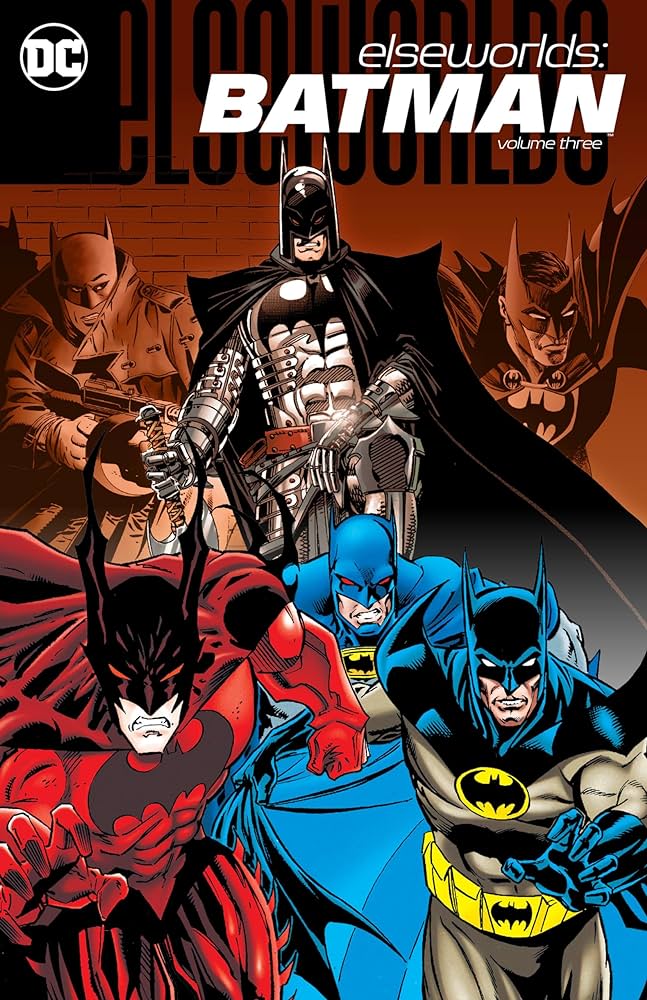
Elseworlds
Batman Vol. 3
2018
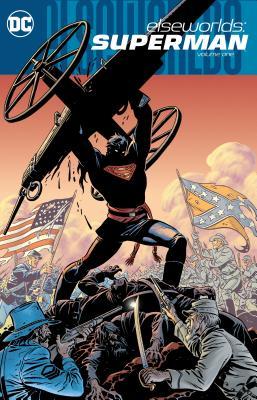
Elseworlds Superman 1
2018
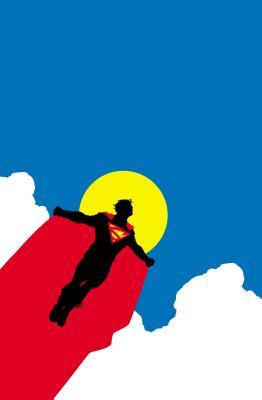
Elseworlds Superman 2
2019

Superman's Metropolis
1996

Wonder Woman
The Blue Amazon
2003

Justice Riders
1997

Titans
Scissors, Paper, Stone
1997

Superboy's Legion
2011

Superman
At Earth's End
1995

Wonder Woman
Amazonia
1998
Authors


Augustyn got his start in the industry in 1986 as an editor for Tru Studios' Trollords. He then edited Syphons and Speed Racer for NOW Comics in 1987. In 1988, he joined DC, starting out as a co-editor on Action Comics during its period as a weekly title. During the late 1980s and early 1990s Augustyn was an editor for DC Comics, where he edited The Flash, Justice League and the Impact Comics line of titles. Augustyn was recognized for his work in the industry with the Wizard Fan Award for Favorite Editor in 1994. He served as the managing editor of Visionary Comics Studio. As editor of The Flash beginning in 1989, Augustyn brought in Mark Waid as writer in 1992, which led to an acclaimed eight-year run. Under Augustyn's stewardship, the Flash was brought out from the shadow of his predecessors and increased his powers dramatically. Other Augustyn-Waid editor-writer partnerships included The Comet (DC/Impact, 1992) and Impulse (DC, 1995–1996). Augustyn currently works as story editor for publisher Red Giant Entertainment and their Giant-Size Comics line of free print comic book titles which debuted on May 3, 2014 as part of Free Comic Book Day.[

Librarian note: There is more than one author in the GoodReads database with this name John Lindley Byrne is a British-born Canadian-American author and artist of comic books. Since the mid-1970s, Byrne has worked on nearly every major American superhero. Byrne's better-known work has been on Marvel Comics' X-Men and Fantastic Four and the 1986 relaunch of DC Comics’ Superman franchise. Coming into the comics profession exclusively as a penciler, Byrne began co-plotting the X-Men comics during his tenure on them, and launched his writing career in earnest with Fantastic Four (where he also started inking his own pencils). During the 1990s he produced a number of creator-owned works, including Next Men and Danger Unlimited. He also wrote the first issues of Mike Mignola's Hellboy series and produced a number of Star Trek comics for IDW Publishing.



Dean Motter is an illustrator, designer and writer who worked for many years in Toronto, Canada, New York City, and Atlanta. Motter is best known as the creator and designer of Mister X, one of the most influential "new-wave" comics of the 1980s. Dean then took up the Creative Services Art Director's post at Time Warner/DC Comics, where he oversaw the corporate and licensing designs of America’s most beloved comic book characters such as Superman, Batman and Wonder Woman. In his off-hours he went on to create and design the highly acclaimed, retro-futuristic comic book series, Terminal City—and its sequels, Aerial Graffiti. and Electropolis.

Bob Kane (born Robert Kahn; October 24, 1915 – November 3, 1998) was an American comic book artist and writer, credited along with Bill Finger as the creator of the DC Comics superhero Batman. He was inducted into both the comic book industry's Jack Kirby Hall of Fame in 1994 and the Will Eisner Comic Book Hall of Fame in 1996. http://en.wikipedia.org/wiki/Bob_Kane

Barbara Randall Kesel is an American writer and editor of comic books; her bibliography includes work for DC Comics, Marvel Comics, CrossGen, Image Comics and Dark Horse Comics. Kesel is a very outspoken opponent of sexism in the comic book industry. She is known for her strong female characters, influencing her then husband Karl's work on Lois Lane in the Superman titles and creating Grace, the ruler of the Golden City location in Comics' Greatest World. Kesel initially came into the comics world after writing a 10-page letter to editor Dick Giordano regarding the portrayal of female comic book characters. At Dark Horse, Kesel was part of Team CGW, responsible for most of the design and creation of the setting and characters in the Golden City location. She is currently part of book packaging company The Pack, alongside Lee Nordling, Brian Augustyn, Gordon Kent and Dave Olbrich. Kesel has been nominated for the 1991 "Best Editor" Eisner Award for Badlands, Aliens: Genocide and Star Wars. In 1995, she was nominated for "Best Anthology" and "Best Graphic Album of Previously Published Material" Harvey Awards for, respectively, Instant Piano and Hellboy: Seed of Destruction. She won the 1996 "Best Graphic Album of Previously Published Work" Harvey Award, for Hellboy: The Wolves of St. August.

Tony Harris (born 1969) is an American comic book artist, known for his work on series such as Starman, Iron Man, and Ex Machina. He has been nominated for five Eisner Awards. Librarian Note: There is more than one author in the Goodreads' database with this name. See this thread for more information.

Librarian note: There is more than one author in the GoodReads database with this name Kyle John Baker is an American cartoonist, comic book writer-artist, and animator known for his graphic novels and for a 2000s revival of the series Plastic Man. Baker has won numerous Eisner Awards and Harvey Awards for his work in the comics field.

Steve Gerber graduated from the University of Missouri with a degree in communications and took a job in advertising. To keep himself sane, he wrote bizarre short stories such as "Elves Against Hitler," "Conversion in a Terminal Subway," and "...And the Birds Hummed Dirges!" He noticed acquaintance Roy Thomas working at Marvel, and Thomas sent him Marvel's standard writing test, dialoguing Daredevil art. He was soon made a regular on Daredevil and Sub-Mariner, and the newly created Man-Thing, the latter of which pegged him as having a strong personal style—intellectual, introspective, and literary. In one issue, he introduced an anthropomorphic duck into a horror fantasy, because he wanted something weird and incongruous, and Thomas made the character, named for Gerber's childhood friend Howard, fall to his apparent death in the following issue. Fans were outraged, and the character was revived in a new and deeply personal series. Gerber said in interview that the joke of Howard the Duck is that "there is no joke." The series was existential and dealt with the necessities of life, such as finding employment to pay the rent. Such unusual fare for comicbooks also informed his writing on The Defenders. Other works included Morbius, the Lving Vampire, The Son of Satan, Tales of the Zombie, The Living Mummy, Marvel Two-in-One, Guardians of the Galaxy, Shanna the She-Devil, and Crazy Magazine for Marvel, and Mister Miracle, Metal Men, The Phantom Zone , and The Immortal Doctor Fate for DC. Gerber eventually lost a lawsuit for control of Howard the Duck when he was defending artist Gene Colan's claim of delayed paychecks for the series, which was less important to him personally because he had a staff job and Colan did not. He left comics for animation in the early 1980s, working mainly with Ruby-Spears, creating Thundarr the Barbarian with Alex Toth and Jack Kirby and episodes of The Puppy's Further Adventures, and Marvel Productions, where he was story editor on multiple Marvel series including Dungeons & Dragons, G.I. Joe, and The Transformers. He continued to dabble in comics, mainly for Eclipse, including the graphic novel Stewart the Rat, the two-part horror story "Role Model: Caring, Sharing, and Helping Others," and the seven-issue Destroyer Duck with Jack Kirby, which began as a fundraiser for Gerber's lawsuit. In the early 1990s, he returned to Marvel with Foolkiller, a ten-issue limited series featuring a new version of a villain he had used in The Man-Thing and Omega the Unknown, who communicated with a previous version of the character through internet bulletin boards. An early internet adopter himself, he wrote two chapters of BBSs for Dummies with Beth Woods Slick, with whom he also wrote the Star Trek: The Next Generation episode, "Contagion." During this period, he also wrote The Sensational She-Hulk and Cloak and Dagger for Marvel, Cybernary and WildC.A.T.s for Image, and Sludge and Exiles for the writer-driven Malibu Ultraverse, and Nevada for DC's mature readers Vertigo line. In 2002, he returned to the Howard the Duck character for Marvel's mature readers MAX line, and for DC created Hard Time with Mary Skrenes, with whom he had co-created the cult hit Omega the Unknown for Marvel. Their ending for Omega the Unknown remains a secret that Skrenes plans to take to the grave if Marvel refuses to publish it. Suffering from idiopathic pulmonary fibrosis ("idiopathic" meaning of unknown origin despite having been a heavy smoker much of his life), he was on a waiting list for a double lung transplant. His final work was the Doctor Fate story arc, "More Pain Comics," for DC Comics'
John Marwood Cleese is an English actor, comedian, writer, film producer, and singer. Cleese is probably best known for his various roles in the British comedy Monty Python's Flying Circus, his role as Basil Fawlty in Fawlty Towers and his various roles in the British comedy The Frost Report. He also played the role of Archie Leach in the American / British comedy film A Fish Called Wanda.

Terry LaBan decided to be a cartoonist at the age of 6. He grew up to draw political cartoons and illustrations, create alternative comics series for Fantagraphics Books and Dark Horse comics, and write for DC Vertigo and Disney Egmont, where he spent 14 years writing Donald Duck comics. From 2001 to 2015, Terry and his wife Patty created the daily comic strip “Edge City”, which was syndicated by King Features. Terry has two kids and two cats, and lives just outside Philadelphia. Mendel the Mess-Up, his first middle grade graphic novel, will be published in December of 2024.

Roy Thomas was the FIRST Editor-in-Chief at Marvel—After Stan Lee stepped down from the position. Roy is a longtime comic book writer and editor. Thomas has written comics for Archie, Charlton, DC, Heroic Publishing, Marvel, and Topps over the years. Thomas currently edits the fanzine Alter Ego for Twomorrow's Publishing. He was Editor for Marvel comics from 1972-1974. He wrote for several titles at Marvel, such as Avengers, Thor, Invaders, Fantastic Four, X-Men, and notably Conan the Barbarian. Thomas is also known for his championing of Golden Age comic-book heroes—particularly the 1940s superhero team the Justice Society of America—and for lengthy writing stints on Marvel's X-Men and Avengers, and DC Comics' All-Star Squadron, among other titles. Also a legendary creator. Creations include Wolverine, Carol Danvers, Ghost Rider, Vision, Iron Fist, Luke Cage, Valkyrie, Morbius, Doc Samson, and Ultron. Roy has also worked for Archie, Charlton, and DC among others over the years.
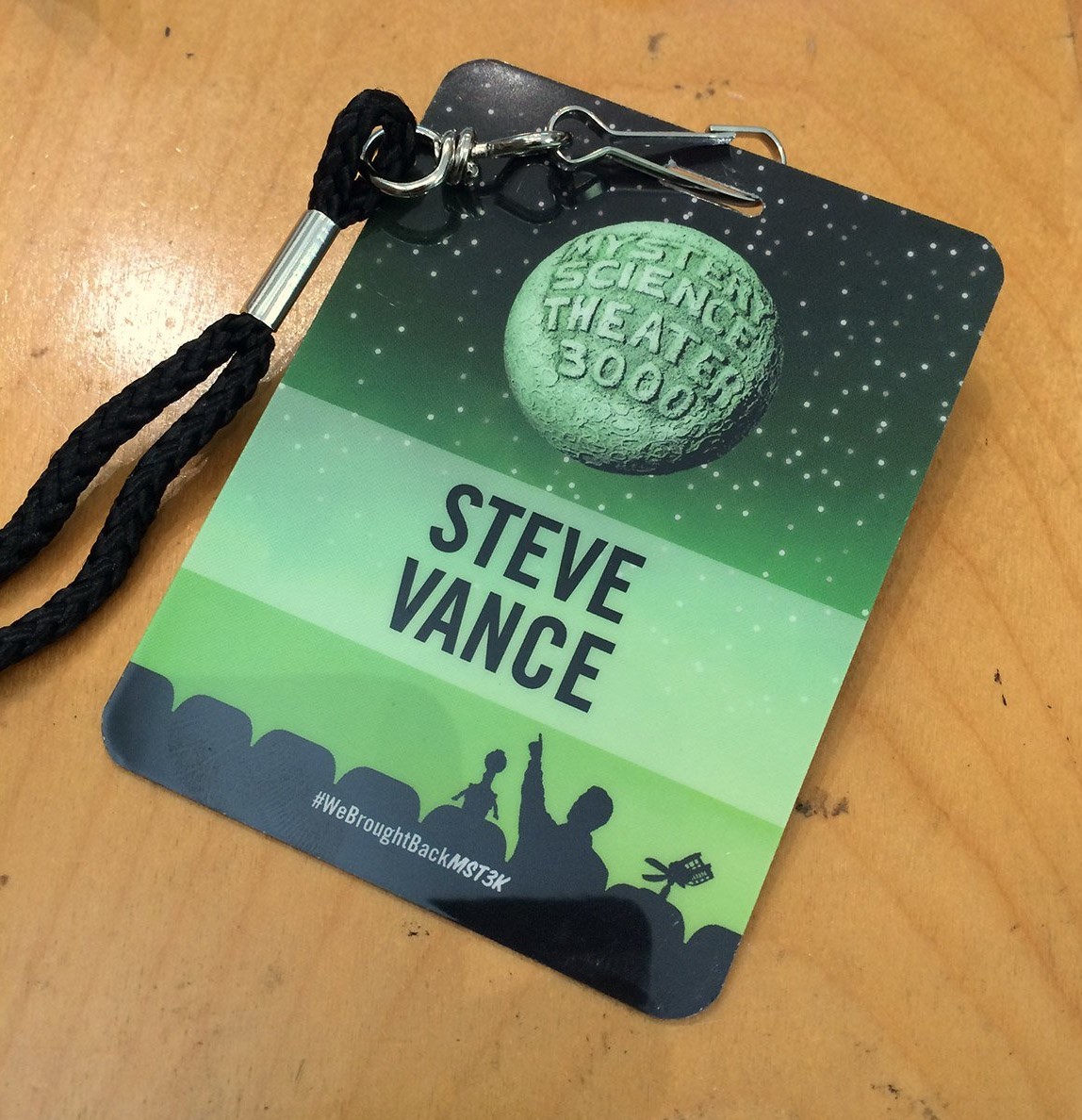
Credited as: Writer, Inker, Penciller mainly for DC Comics list of work can be found here, in chronological order: http://www.comicbookdb.com/creator.ph...

Tom Peyer is an American comic book creator and editor. He is known for his 1999 revisioning of Golden Age super-hero Hourman, as well as his work on the Legion of Super-Heroes in the 1990s. An editor at DC Comics/Vertigo from 1987 to 1993, he served as assistant editor on Neil Gaiman's groundbreaking Sandman. Peyer has also worked for Marvel Comics, Wildstorm, and Bongo Comics. With John Layman, he wrote the 2007–2009 Tek Jansen comic book, based on the Stephen Colbert character.


Michael Lark is an American comics artist and colorist. Lark has provided pencils for DC Comics' Batman, Terminal City, Gotham Central and Legend of the Hawkman. His work for Marvel Comics includes The Pulse and Captain America. He created Lazarus with Greg Rucka, contributing to every issue.

Robert "Bob" Hall is an American comics artist and writer as well as a playwright and theatre director. He is the co-creator of the West Coast Avengers for Marvel Comics and has worked on such series as Armed and Dangerous and Shadowman, which he both drew and wrote for Valiant Comics. According to his personal webpage: BOB HALL: WRITER, ARTIST, AND COMIC CREATOR I’ve worked in the comics industry for more than forty-five years, starting at Charlton Comics in 1974, illustrating horror stories and drawing covers. That same year I took a course in creating comics taught by the legendary John Buscema and at the end of the class, Buscema recommended me to Archie Goodwin, Editor-In-Chief at Marvel, as a penciler. I was immediately thrown into drawing a group book, The Champions, written by Bill Mantlo, who graciously mentored me through my first jobs. Over the next fifteen years, I drew most of Marvel’s Major books and characters, The Champions, Doctor Doom, the Red Skull, The Avengers, The West Coast Avengers, The Squadron Supreme, Spider-man, including Spider-Man meeting the original Saturday Night Live cast, Thor, Nick Fury, Moon Knight, one issue of The New Mutants, and What If Conan Were Trapped In the Twentieth Century, Part 2. I also did a slew of Movie adaptations including Willow, Dark Man, and arguably the worst superhero movie ever, the 1980s Captain America. On the other hand, check out the graphic novel, Emperor Doom, probably my best work for Marvel. In 1977, Jim Shooter, the new Editor-In Chief, offered me a job as one of a new group of sub-editors. I signed on for a six-month tenure since a stage adaptation I had co-authored, The Passion of Dracula, then running Off Broadway, was due to receive a West End production in London. There was no question that was going to be there for that. Those six months in the bullpen gave me opportunity of working with some of the most talented people in the comics field, Shooter, Stern, Salicrup, Giacoia, both Buscema’s, Colan, Janson, Rubenstein, Layton, Marie Severin, Byrne, Jo Duffy, Claremont, others too many to list. I learned more about making comics than any time before or since. Then in the 1990s, Jim Shooter started a new company, Valiant. Having seen a plays I had authored, he invited me to write and asked me to choose one of four different titles. For me, Shadowman had the most potential, set in New Orleans, featuring a musician and involving voodoo, all stuff I could dig into. I wrote and eventually drew the book for thirty-five issues. It was very successful but was eventually rebooted to support a video game while moved on to I create Armed and Dangerous, a crime series and probably my finest work in comics. It’s hard to find copies but well worth the effort. Then, in the late 1990s, the comics industry went to hell.

Mike Grell (born 1947) is a comic book writer and artist. Grell studied at the University of Wisconsin-Green Bay, the Chicago Academy of Fine Art, and took the Famous Artists School correspondence course in cartooning. His entry into the comics industry was in 1972, as an assistant to Dale Messick on the Brenda Starr comic strip. In 1973 Grell moved to New York, and began his long relationship with DC Comics. His first assignment at DC was on Superboy and the Legion of Super-Heroes, a high-profile assignment for an artist with no prior experience illustrating a monthly comic book. Grell says he got that job because he was walking in the editor's door to ask for work, literally, as the previous artist was walking out the door, having just quit. These stories were written by Cary Bates and Jim Shooter. The Bates/Grell/Shooter run on the title is very well-regarded today by Superboy/Legion fans, who consider it one of the high-water marks in the character/team's history. Grell's work on SATLOSH is widely thought to be some of the best beefcake/cheesecake ever committed to comic book pages, and is affectionately referred to as the 'disco Legion' in retrospect by fans of the title. A writer as well as artist, Grell cemented his status as a fan-favorite with his best-known creation, The Warlord, one of the first sword and sorcery comics, and reportedly the best-selling title published by DC Comics in the late-1970s. The character first appeared in 1st Issue Special #8 (Nov 1975) and was soon given his own ongoing title (The Warlord #1, Jan/Feb 1976). In this book, Air Force pilot Travis Morgan crash-lands in the prehistoric "hidden world" of Skartaris (a setting highly influenced by Jules Verne's A Journey to the Center of the Earth and Edgar Rice Burroughs' Pellucidar). For years thereafter, Morgan engages in adventures dressed only in a winged helmet, wristbands, boots, and breechclout, and armed with a sword and (years before Dirty Harry handled one) a .44 Auto Mag. At DC, Grell also worked on titles such as Aquaman, Batman, and the Phantom Stranger, and with writer Dennis O'Neil on the re-launch of the Green Lantern/Green Arrow series in 1976. [edit] Tarzan Grell wrote and drew the Tarzan comic strip from July 19, 1981 to February 27, 1983 (except for one strip, February 13, 1983, by Thomas Yeates). These strips were rerun in newspapers in 2004 - 2005. [edit] First Comics: Jon Sable Freelance and Starslayer Cover to Jon Sable Freelance #7. Art by Mike Grell.Through the 1980s Grell developed creator-owned titles such Jon Sable Freelance and Starslayer. Jon Sable Freelance was published by the now-defunct First Comics. Starslayer, a space-born science fiction series, started at Pacific Comics, but shifted to First. The titular character of Jon Sable Freelance was a former Olympic athlete, later a African big-game hunter, who became a mercenary. First appearing with a cover date of June 1983, Jon Sable Freelance was a successful non-super-hero comic book in an era when successful non-super-hero comic books were almost unheard of, and a graphically violent comic sold in mainstream comic book stores in an era when such was as rare. Jon Sable was a precursor to what would eventually be called, by some, "the Dark Age of Comics," when even long-established super-heroes would become increasingly grim and violent. The character was heavily influenced by Ian Fleming's James Bond novels as well as drawing on pulp fiction crime stories. Also, many of the stories of Sable's hunting exploits in Africa were influenced by Peter Hathaway Capstick's novels. At a convention in the late 1980s, Grell stated that his idea for Sable was "something like a cross between James Bond and Mickey Spillane's Mike Hammer." Sable was adapted into a short-lived television series and the character's origin tale, "A Storm Over Eden," from the comic book, was expanded and novelized by Grell under the title Sable, which was publ


Charles "Chuck" Dixon is an American comic book writer, perhaps best-known for long runs on Batman titles in the 1990s. His earliest comics work was writing Evangeline first for Comico Comics in 1984 (then later for First Comics, who published the on-going series), on which he worked with his then-wife, the artist Judith Hunt. His big break came one year later, when editor Larry Hama hired him to write back-up stories for Marvel Comics' The Savage Sword of Conan. In 1986, he began working for Eclipse Comics, writing Airboy with artist Tim Truman. Continuing to write for both Marvel and (mainly) Eclipse on these titles, as well as launching Strike! with artist Tom Lyle in August 1987 and Valkyrie with artist Paul Gulacy in October 1987, he began work on Carl Potts' Alien Legion series for Marvel's Epic Comics imprint, under editor Archie Goodwin. He also produced a three-issue adaptation of J. R. R. Tolkien's The Hobbit for Eclipse with artist David Wenzel between 1989 and 1990, and began writing Marc Spector: Moon Knight in June 1989. His Punisher OGN Kingdom Gone (August, 1990) led to him working on the monthly The Punisher War Journal (and later, more monthly and occasional Punisher titles), and also brought him to the attention of DC Comics editor Denny O'Neil, who asked him to produce a Robin mini-series. The mini proved popular enough to spawn two sequels - The Joker's Wild (1991) and Cry of the Huntress (1992) - which led to both an ongoing monthly series (which Dixon wrote for 100 issues before leaving to work with CrossGen Comics), and to Dixon working on Detective Comics from #644-738 through the major Batman stories KnightFall & KnightsEnd (for which he helped create the key character of Bane), DC One Million, Contagion, Legacy, Cataclysm and No Man's Land . Much of his run was illustrated by Graham Nolan. He was DC's most prolific Batman-writer in the mid-1990s (rivalled perhaps in history by Bill Finger and Dennis O'Neil) - in addition to writing Detective Comics he pioneered the individual series for Robin, Nightwing (which he wrote for 70 issues, and returned to briefly with 2005's #101) and Batgirl, as well as creating the team and book Birds of Prey . While writing multiple Punisher and Batman comics (and October 1994's Punisher/Batman crossover), he also found time to launch Team 7 for Jim Lee's WildStorm/Image and Prophet for Rob Liefeld's Extreme Studios. He also wrote many issues of Catwoman and Green Arrow, regularly having about seven titles out each and every month between the years 1993 and 1998. In March, 2002, Dixon turned his attention to CrossGen's output, salthough he co-wrote with Scott Beatty the origin of Barbara Gordon's Batgirl in 2003's Batgirl: Year One. For CrossGen he took over some of the comics of the out-going Mark Waid, taking over Sigil from #21, and Crux with #13. He launched Way of the Rat in June 2002, Brath (March '03), The Silken Ghost (June '03) and the pirate comic El Cazador (Oct '03), as well as editing Robert Rodi's non-Sigilverse The Crossovers. He also wrote the Ruse spin-off Archard's Agents one-shots in January and November '03 and April '04, the last released shortly before CrossGen's complete collapse forced the cancellation of all of its comics, before which Dixon wrote a single issue of Sojourn (May '04). Dixon's Way of the Rat #24, Brath #14 and El Cazador #6 were among the last comics released from the then-bankrupt publisher. On June 10, 2008, Dixon announced on his forum that he was no longer "employed by DC Comics in any capacity."


Hollingsworth graduated from The Kubert School in 1991 and began getting regular work from Marvel Comics and DC Comics. In 1993, he was hired to the Dark Horse Comics staff as head of the painted art department. After a year, he returned to freelance work and helped launch the award-winning Preacher from DC's Vertigo imprint. He has worked on many titles for DC/Vertigo, Marvel, and others, including Catwoman, Batman, Daredevil and Alias. He won an Eisner Award for Best Colorist/Coloring in 1997, for work on several comics including Death: The High Cost of Living. He was nominated in 2004 for Catwoman. His latest project is an Eternals book written by Neil Gaiman and pencilled by John Romita, Jr.. Hollingsworth signed an exclusive contract with Marvel in April 2010.[1] In 2003, he enrolled in the Gnomon School of Visual Effects in Hollywood to become a visual effects artist in the film industry. He began working as a texture painter and technical director on such films as Sky Captain and the World of Tomorrow, Fantastic Four, Serenity, Superman Returns, among others. Toward the end of 2006, Hollingsworth moved to Croatia.



Mike W. Barr is an American writer of comic books, and mystery, and science fiction novels. Barr's debut as a comics professional came in DC Comics' Detective Comics #444 (Dec. 1974-Jan. 1975), for which he wrote an 8-page back-up mystery feature starring the Elongated Man. Another Elongated Man story followed in Detective Comics #453 (November 1975). He wrote text articles and editorial replies in letter columns for the next few years. By mid-1980 he was writing regularly for both DC and Marvel, including stories for Marvel Team-Up, Mystery in Space, Green Lantern, and various Batman titles. Legion of Super-Heroes #277 (July 1981) saw him take on editorial duties at DC, while writing issues of DC's Star Trek comic, for whom he created the native American character Ensign Bearclaw and a pacifist Klingon named Konom. In December 1982, he and artist Brian Bolland began Camelot 3000, a 12 issue limited series that was one of DC Comics' first direct market projects. In August 1983, Barr created what may well be his most enduring work, the monthly title Batman and the Outsiders with art by Jim Aparo. Barr wrote every issue of the original series, and its Baxter paper spinoff, The Outsiders. His other comics work includes Mantra and Maze Agency as well as the 1987 OGN hardcover book Batman: Son of the Demon (with art by Jerry Bingham), proceeds from which reputedly "restored DC Comics to first place in sales after fifteen years." This title, and Barr's work on Batman with artist Alan Davis have been cited by Grant Morrison as key inspirations for his recent (2006) run on the Batman title. In 2007, he wrote a two-part story for the pages of DC's JLA: Classified (#47-48, Jan-Feb 2008), returned to the Outsiders with Outsiders: Five of a Kind—Katana/Shazam #1 (Oct 2007), contributed to Tokyopop's Star Trek: The Manga, and relaunched Maze Agency at IDW Publishing. He has also scripted many of Bongo Comics' Simpsons titles, including a Christmas story for 2010. In May 2010, the Invisible College Press published Barr's science fiction/fantasy novel, Majician/51, about the discoveries of a scientist working at Area 51.

William Francis Messner-Loebs (born William Francis Loebs, Jr.) is an American comics artist and writer from Michigan, also known as Bill Loebs and Bill Messner-Loebs. His hyphenated surname is a combination of his and his wife Nadine's unmarried surnames. In the 1980s and 1990s he wrote runs of series published by DC Comics, Image Comics, Comico, and other comics publishers, including DC's superhero series Flash and Wonder Woman among others. Additionally he has both written and drawn original creator-owned works, such as Journey: The Adventures of Wolverine MacAlistaire.


Lovern was born in the small town of Arborg, Manitoba in 1954. His father was a partner in a small trucking company and his mother waited and managed for the local Canadian Legion. The first house his family owned was a converted chicken coop without running water and equipped with an outhouse. Lovern graduated from Arborg Collegiate in 1972 and enrolled at Red River Community College, where he attended the first year of their Advertising Art course. The following year, he entered the work force as a printer’s assistant at Bulman Brothers Printing. After several years as a printer he quit his job and enrolled in the Fine Arts program at the University of Manitoba in 1982. He graduated with a Bachelor of Fine Art, Honours and started his first work in the comic book industry as George Freeman’s assistant. Lovern eventually won representation by Star Reach Agency and found colour work at 1st Comics on the Elric series. Shortly after he completed a try out book at DC Comics. Lovern was engaged by DC to develop a look and colour for the book John Constantine: Hellblazer, which was to become a flagship title for the Vertigo imprint. Lovern, with the aid of his cousin Christopher Chuckry developed a computer colouring method with the use of Photoshop and started a company called Digital Chameleon. Their method redefined production in the entire comic book industry and graphic field. While residing over Digital Chameleon as creative director Lovern had his first comic book story published. He wrote and coloured the short story, “So This Is Christmas”, which was illustrated by Tim Sale for the benefit book Within Our Reach” published by Marvel and Star Reach. Lovern went on to write Agents of Law for Dark Horse Comics and the Victorian for Penny Farthing Press. In 1997 he wrote, “Tarzan: Le Monstre” for Dark Horse Comics and was nominated as best writer based on the six issues those stories spanned. Since then Lovern has written several other comic books and contributed short prose pieces to several anthologies. In 2011 Lovern signed a deal with Renegade Arts Entertainment to colour the graphic novel, “The Loxleys & the War of 1812.” Shortly after that he signed the deal with that publishers to put his creator owned series, “Shame” into print. Shame was followed by the graphic novel, “Underworld” and this year the “Shame” hardcover collection will be released. Lovern is presently working on “Necromantic” a new creator owned series from Renegade Arts Entertainment.

Librarian note: There is more than one author in the GoodReads database with this name Dave Gibbons is an English comic book artist, writer and sometime letterer. He is best known for his collaborations with writer Alan Moore, which include the miniseries Watchmen and the Superman story "For the Man Who Has Everything". He also was an artist for the UK anthology 2000 AD, for which he contributed a large body of work from its first issue in 1977. Gibbons broke into British comics by working on horror and action titles for both DC Thomson and IPC. When the science-fiction anthology title 2000 AD was set up in the mid-1970s, Gibbons contributed artwork to the first issue, Prog 01 (February 1977), and went on to draw the first 24 installments of Harlem Heroes, one of the founding (and pre-Judge Dredd) strips. Mid-way through the comic's first year he began illustrating Dan Dare, a cherished project for Gibbons who had been a fan of the original series. Also working on early feature Ro-Busters, Gibbons became one of the most prolific of 2000 AD's earliest creators, contributing artwork to 108 of the first 131 Progs/issues. He returned to the pages of "the Galaxy's Greatest Comic" in the early 1980s to create Rogue Trooper with writer Gerry Finley-Day and produce an acclaimed early run on that feature, before handing it over to a succession of other artists. He also illustrated a handful of Tharg's Future Shocks shorts, primarily with author Alan Moore. Gibbons departed from 2000 AD briefly in the late 1970s/early 1980s to became the lead artist on Doctor Who Weekly/Monthly, for which magazine he drew the main comic strip from issue #1 until #69, missing only four issues during that time. He is best known in the US for collaborating with Alan Moore on the 12-issue limited series Watchmen, now one of the best-selling graphic novels of all time, and the only one to feature on Time's "Top 100 Novels" list. From the start of the 1990s, Gibbons began to focus as much on writing and inking as on drawing, contributing to a number of different titles and issues from a variety of companies. Particular highlights included, in 1990, Gibbons writing the three-issue World's Finest miniseries for artist Steve Rude and DC, while drawing Give Me Liberty for writer Frank Miller and Dark Horse Comics. He penned the first Batman Vs. Predator crossover for artists Andy and Adam Kubert (Dec 1991 - Feb 1992), and inked Rick Veitch and Stephen R. Bissette for half of Alan Moore's 1963 Image Comics series. Works other than comics include providing the background art for the 1994 computer game Beneath a Steel Sky and the cover to K, the 1996 debut album by psychedelic rock band Kula Shaker. In 2007, he served as a consultant on the film Watchmen, which was adapted from the book, and released in March 2009. 2009's Broken Sword: The Shadow of the Templars Director's Cut for the Nintendo DS and Wii platforms featured hand drawn art by Dave Gibbons.



Doug Moench, is an American comic book writer notable for his Batman work and as the creator of Black Mask, Moon Knight and Deathlok. Moench has worked for DC Comics, Marvel Comics, Dark Horse Comics and many other smaller companies; he has written hundreds of issues of many different comics, and created dozens of characters, such as Moon Knight. In 1973, Moench became the de facto lead writer for the Marvel black-and-white magazine imprint Curtis Magazines. He contributed to the entire runs of Planet of the Apes, Rampaging Hulk (continuing on the title when it changed its name to The Hulk!) and Doc Savage, while also serving as a regular scribe for virtually every other Curtis title during the course of the imprint's existence. Moench is perhaps best known for his work on Batman, whose title he wrote from 1983–1986 and then again from 1992–1998. (He also wrote the companion title Detective Comics from 1983–1986.) Moench is a frequent and longtime collaborator with comics artist Paul Gulacy. The pair are probably best known for their work on Shang-Chi: Master of Kung Fu, which they worked on together from 1974–1977. They also co-created Six from Sirius, Slash Maraud, and S.C.I. Spy, and have worked together on comics projects featuring Batman, Conan the Barbarian and James Bond. Moench has frequently been paired with the artist and inker team of Kelley Jones and John Beatty on several Elseworlds Graphic Novels and a long run of the monthly Batman comic.

Pat McGreal was a prolific writer of Disney Comics for the Egmont Company overseas, much of it later republished in this country. His non-Disney work included three graphic novels for DC/Vertigo: Chiaroscro; The Private Lives of Leonardo DaVinci, Veils and I, Paparazzi. Among the comic books he wrote for were Captain Marvel, Tarzan, The Simpsons, Judge Dredd, The Flash, Justice League, Indiana Jones, Martian Manhunter and Fighting American. He was an Eisner Award nominee and a past president of the Comic Art Professonal Society.

Alan Brennert is the author of the historical novels Palisades Park, Honolulu (chosen one of the best books of 2009 by The Washington Post), and Moloka'i, which won the 2006 Bookies Award, sponsored by the Contra Costa Library, for the Book Club Book of the Year (and has sold over 600,000 copies since publication). It was also a 2012 One Book, One San Diego selection. He has won an Emmy Award and a People's Choice Award for his work as a writer-producer on the television series L.A. Law, and his short story "Ma Qui" was honored with a Nebula Award. His new novel, Daughter of Moloka'i, will be published by St. Martin's Press on February 19, 2019. Follow him on Facebook at https://www.facebook.com/alan.brennert. http://us.macmillan.com/palisadespark...



